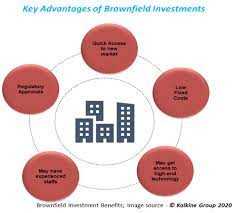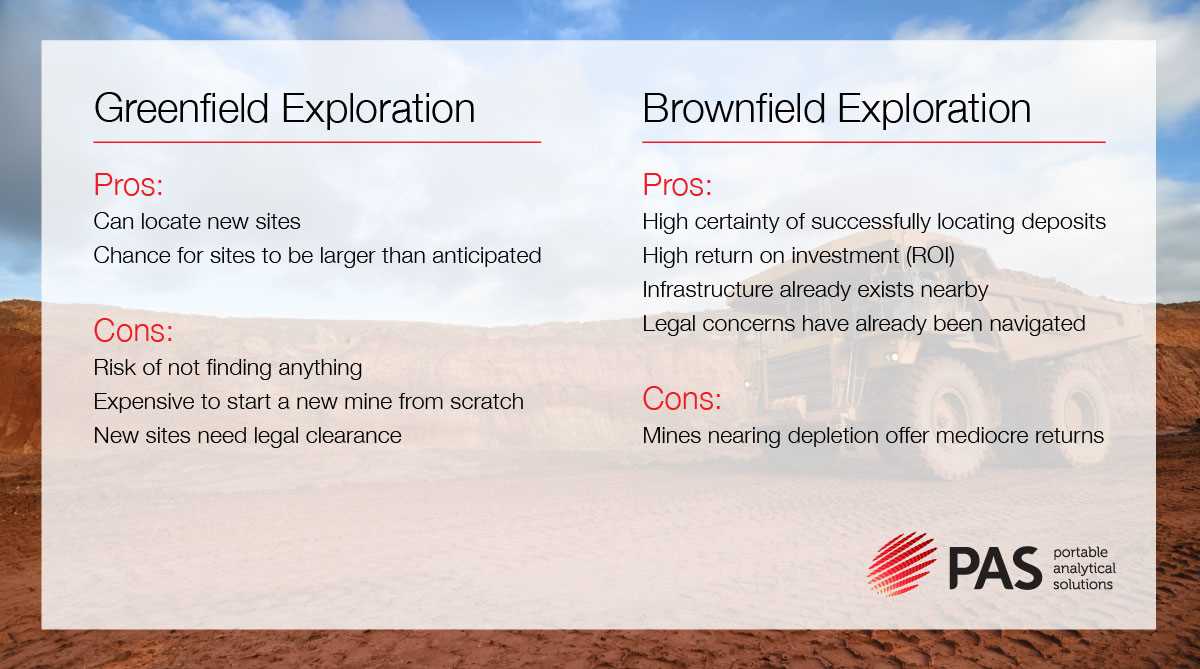Brownfield Investment: Definition, Advantages, Vs Greenfield
Brownfield investment refers to the practice of investing in existing facilities or properties that have been previously developed or used. This term is commonly used in the context of real estate and industrial development.
Unlike greenfield investment, which involves building new facilities on undeveloped land, brownfield investment involves repurposing or revitalizing existing infrastructure. This can include renovating old buildings, redeveloping industrial sites, or converting abandoned properties into new uses.
There are several advantages to brownfield investment. Firstly, it can be a more cost-effective option compared to greenfield investment. By utilizing existing infrastructure, companies can save on construction costs and potentially benefit from existing utilities and transportation networks.
Additionally, brownfield investment can contribute to urban revitalization and sustainable development. By redeveloping and repurposing existing properties, companies can help reduce urban sprawl and promote the efficient use of land resources.
When comparing brownfield investment to greenfield investment, there are some key differences to consider. Greenfield investment offers the advantage of starting with a clean slate, allowing companies to design and build facilities according to their specific needs and requirements. However, greenfield investment can be more time-consuming and costly, as it involves acquiring and developing undeveloped land.
On the other hand, brownfield investment allows companies to take advantage of existing infrastructure and potentially benefit from established markets and customer bases. It can also be a more sustainable option, as it promotes the reuse of existing resources and reduces environmental impact.
What is Brownfield Investment?
Brownfield investment refers to the process of investing in existing or previously developed properties or facilities that have fallen into disuse or are underutilized. These properties may have been abandoned, vacant, or contaminated, and are often located in urban areas. Brownfield investments involve revitalizing and redeveloping these properties to bring them back into productive use.
Brownfield investments can take various forms, including the renovation or restoration of existing buildings, the redevelopment of industrial sites, or the conversion of vacant lots into new commercial or residential spaces. The goal of brownfield investment is to transform underutilized properties into valuable assets that contribute to economic growth, job creation, and community development.
Key Characteristics of Brownfield Investment:
1. Environmental Remediation: Brownfield investments often require environmental remediation, which involves assessing and cleaning up any contamination present on the site. This can include removing hazardous materials, treating soil or groundwater pollution, or managing other environmental risks.
2. Infrastructure Reuse: Brownfield investments typically involve reusing existing infrastructure, such as buildings, utilities, or transportation networks. This can help reduce costs and environmental impacts compared to greenfield investments, which require the construction of new infrastructure.
3. Regulatory Considerations: Brownfield investments may be subject to various regulatory requirements, including zoning restrictions, environmental regulations, and building codes. Investors need to navigate these regulations to ensure compliance and obtain necessary permits or approvals.
Benefits of Brownfield Investment:

There are several advantages to brownfield investment:
1. Economic Revitalization: Brownfield investments can stimulate economic growth by creating new jobs, attracting businesses, and generating tax revenue. The redevelopment of underutilized properties can also enhance property values and attract further investment in the surrounding area.
2. Environmental Sustainability: Brownfield investments contribute to environmental sustainability by repurposing existing sites and reducing the need for new development on undeveloped land. By cleaning up contaminated sites, brownfield investments can also improve air and water quality and protect natural habitats.
3. Community Development: Brownfield investments can have positive social impacts by revitalizing neighborhoods, improving public spaces, and providing new amenities or services. They can also help address social equity issues by creating affordable housing or community facilities.
In comparison to greenfield investments, which involve developing on undeveloped land, brownfield investments offer unique opportunities to transform underutilized properties into valuable assets. By repurposing existing infrastructure and addressing environmental challenges, brownfield investments can contribute to sustainable and inclusive urban development.
Advantages of Brownfield Investment

Brownfield investment offers several advantages that make it an attractive option for businesses looking to expand or enter new markets. These advantages include:
1. Cost Savings
One of the main advantages of brownfield investment is the potential for cost savings. Brownfield sites are often already equipped with infrastructure such as roads, utilities, and buildings, which can significantly reduce the costs associated with establishing new facilities. This can be especially beneficial for businesses operating in industries that require large-scale infrastructure, such as manufacturing or logistics.
2. Reduced Time to Market

Another advantage of brownfield investment is the reduced time to market. Since brownfield sites already have existing infrastructure, businesses can start operations more quickly compared to greenfield investments, where everything needs to be built from scratch. This can be crucial for businesses that need to enter the market quickly or have time-sensitive projects.
3. Access to Established Markets
Brownfield investment also provides businesses with access to established markets. Brownfield sites are typically located in areas that already have an existing customer base and infrastructure. This can give businesses a competitive advantage by allowing them to tap into an established market and leverage existing networks and supply chains.
4. Environmental Benefits
One often overlooked advantage of brownfield investment is the environmental benefits it offers. By redeveloping and repurposing existing sites, businesses can help reduce urban sprawl and preserve green spaces. Additionally, brownfield investment can contribute to sustainable development by revitalizing blighted areas and promoting the reuse of existing resources.
5. Community Support
Brownfield investment projects often receive support from local communities and governments. This is because brownfield redevelopment can bring economic benefits, such as job creation and increased tax revenue, to the surrounding area. By investing in brownfield sites, businesses can build positive relationships with local stakeholders and contribute to the overall development of the community.
Brownfield Investment Vs Greenfield: A Comparison
Brownfield Investment
Brownfield investment refers to the acquisition or redevelopment of existing facilities or properties for further business expansion or development. This approach involves investing in already established infrastructure, such as factories, warehouses, or office buildings, which may require renovation or modernization.
Advantages of Brownfield Investment:
1. Reduced Time and Costs: One of the major advantages of brownfield investment is the potential for significant time and cost savings. By utilizing existing infrastructure, companies can avoid the lengthy process of building from scratch, obtaining permits, and conducting extensive site preparation.
2. Access to Established Markets: Brownfield investment allows companies to enter established markets quickly. By acquiring existing facilities, businesses can tap into an existing customer base, supply chain networks, and distribution channels, which can help accelerate market penetration and revenue generation.
3. Environmental Considerations: Brownfield investment often involves the revitalization of abandoned or underutilized sites, contributing to environmental sustainability. By repurposing existing facilities, companies can reduce the need for new construction and minimize the environmental impact associated with building on greenfield sites.
Greenfield Investment
Greenfield investment, on the other hand, involves the construction and development of new facilities or infrastructure in a foreign market. This approach typically requires more time, resources, and planning compared to brownfield investment.
Advantages of Greenfield Investment:
1. Customization and Flexibility: Greenfield investment offers companies the opportunity to design and build facilities according to their specific requirements. This allows for greater customization and flexibility in terms of layout, technology integration, and operational processes.
2. Economic Incentives: Many countries offer attractive incentives, such as tax breaks, grants, or subsidies, to attract greenfield investments. These incentives can significantly reduce the initial costs and provide financial advantages for businesses considering expansion into new markets.
3. Brand Image and Reputation: Greenfield investment allows companies to establish a strong brand presence from the ground up. By building new facilities, businesses can showcase their commitment to innovation, sustainability, and local job creation, which can enhance their reputation and brand image in the market.

Emily Bibb simplifies finance through bestselling books and articles, bridging complex concepts for everyday understanding. Engaging audiences via social media, she shares insights for financial success. Active in seminars and philanthropy, Bibb aims to create a more financially informed society, driven by her passion for empowering others.
